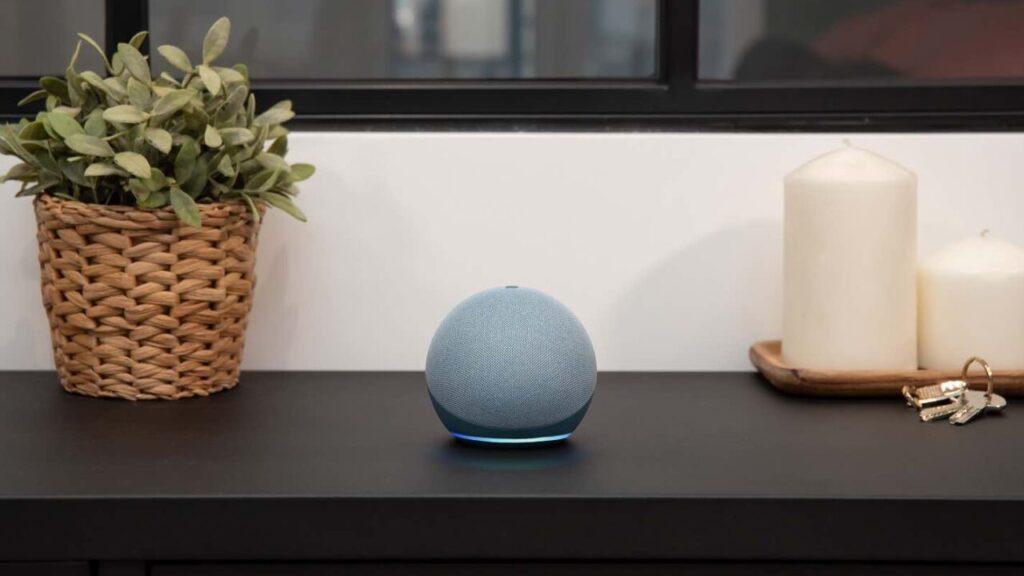Technology can be met with skepticism, especially if it is not immediately clear how it can respect the privacy and security of those who use it. For this reason, on the occasion of Privacy DayAmazon reiterates the maximum commitment to protecting users of the Alexa worlddebunking five myths linked to the topic of privacy and security to allow them to improve their experience with the voice assistant and live it carefree.
Privacy and Security: Alexa does not listen to users’ personal conversations
Alexa is discreet and participates in the user’s life only when requested. By default, devices with Alexa integration are designed to activate only once Alexa is detected activation word chosen (for example, Alexa, Amazon, Computer or Echo), without listening to other conversations. Only when the device detects the wake word does Alexa listen to user requests. In practice, Echo devices only detect the sound waves of the wake word and ignore everything else. Like in the fairy tale One Thousand and One Nights: the invisible door carved into the mountain can only be opened by saying “Open, Sesame!”, otherwise it remains closed.
Alexa allows you to manage privacy settings easily and intuitively
Echo smart speakers come with a off button to turn off the microphones and, thanks to indicator lights, it is possible to always know when Alexa is listening: if the light ring is blue the device is activated and able to receive and transmit user requests to Amazon’s protected Cloud; if the light ring is red the microphones are deactivated and audio cannot be detected. Just press the Microphone button again to reactivate them. Additionally, Echo Show devices with cameras have camera off buttons and integrated camera cover.
You can also conveniently customize your Alexa Privacy Settings in theapp Alexa e online: Users can read, listen to and delete your voice recordings, review and manage the history of your smart home devices e see and update the Alexa Skills that you have given permission to access certain data. Users can manually enable and disable the feature as well Drop In – which, like an intercom, makes it easier for family and friends to connect with each other – and grant permissions exclusively to specific contacts via the Alexa app.

Privacy and security: Alexa allows you to delete anything you ask, with your voice
If you don’t want to look for your smartphone or take out your PC, you can access privacy controls and features by asking Alexa directly. To delete voice recordings from the last ten minutes, for example, just say “Alexa, delete what I just said” or
“Alexa, delete everything I said” to delete all voice recordings. If, however, you want to ascertain what was recorded in the most recent voice request, just say “Alexa, tell me what you heard” and Amazon’s voice assistant will read the question again.
And if an answer is unclear or unconvincing, the user can ask “Alexa, why did you do this?” and receive a brief explanation. If you don’t know your settings, simply ask “Alexa, what are my privacy settings?” they can be discovered and modified.
Alexa is designed to be secure
Hundreds of Amazon employees dedicate themselves every day to designing safe products, taking care of check the hardware requirements of the devices, perform application security reviews, conduct rigorous safety testing e continuous software checksfor Alexa services. Additionally, all data streamed between Alexa-enabled devices and the Cloud is encrypted, and everyone receives regular, automatic security updates with the latest protections against possible threats and vulnerabilities.
Alexa uses authorized voice recordings exclusively to improve itself
Amazon does not sell data collected through Alexa. Interactions with the voice assistant are used to make it more useful over time, help it understand the user’s preferences so that interactions are increasingly precise and possible customize your experience to the fullest. Allowing Alexa to learn from interactions helps create patterns that can be identified and consolidated by machine learning systems.
If you want to listen to a song whose title you no longer remember, for example Il cielo in una stanza, simply improvise it: “Alexa, play the song that goes: When you’re here with me”. This is just one example of how training with user requests is contributing every day to making Alexa more and more efficient, intelligent and intuitive.















Leave a Reply
View Comments